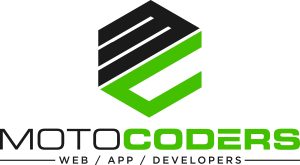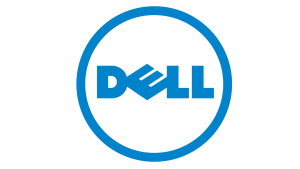IT Solutions for Non-Tech Founders – Stop Wasting Time and Money
Solutions are at your fingertips to help you navigate the complex world of technology without needing a technical background. With effective IT solutions, you can streamline your operations, enhance productivity, and reduce costs significantly. By understanding your tech needs and implementing the right tools, you can focus on growing your business instead of getting bogged down by tech-related challenges. Let’s explore how you can leverage these solutions to save both time and money.
Key Takeaways:
- Prioritize user-friendly technology options that align with your business goals, ensuring ease of adoption and effective implementation.
- Utilize outsourced IT services to access expertise without the overhead of maintaining a full-time in-house team, allowing for scalable growth.
- Invest time in researching and understanding available tools and platforms to make informed decisions that will save resources in the long run.
The Costly Missteps Non-Tech Founders Make
Misjudging the Importance of Technical Expertise
Your venture might be rich with innovative ideas and a solid business model, but overlooking the significance of technical expertise can derail your progress. Many non-tech founders believe they can outsource all technological challenges, assuming that hiring external help is the same as having in-house knowledge. This misconception often leads to missed opportunities for optimization and innovation. For instance, reliance on freelancers or inexperienced developers may result in solutions that do not align with long-term goals or that lack scalability. Your understanding of technology, even at a basic level, plays a vital role in guiding these decisions effectively.
A strong grasp of the technical landscape is not just beneficial—it’s necessary. Engaging with your technical team or consultants during strategic discussions allows you to make informed decisions about software options, implementation timelines, and necessary investments. By fostering this understanding, you empower yourself to differentiate between innovative technologies that can elevate your business and those that simply drain your budget.
Overspending on Subpar IT Solutions
Your budget may have room for some flexibility, but without careful planning, overspending on subpar IT solutions can quickly become a major setback. Non-tech founders often gravitate towards flashy or costly options, believing that higher prices equate to superior quality. This misjudgment can lead to investments in software or hardware that ultimately fail to meet your specific needs. A common pitfall is purchasing enterprise-level systems when simpler, more cost-effective tools would have sufficed, leading to unnecessary complexities and expenses.
Evaluating your IT solutions should focus on actual requirements rather than attractive features or sales pitches. Conducting a needs assessment and engaging in thorough vetting processes can save you from throwing money at expensive systems that only offer a fraction of the functionality you require. For example, a startup in e-commerce once spent thousands on a sophisticated inventory management system without realizing they needed basic functionality, eventually wasting 50% of their budget on unnecessary features.
Streamlined IT solutions aligned with your business model not only reduce costs but also enhance overall efficiency. By prioritizing quality over prestige, you can invest in tools that effectively support your operational needs without the financial burden of overspending.
The Essential IT Infrastructure Non-Tech Founders Need
Core Technologies That Drive Business Efficiency
Your business’s efficiency hinges on the integration of core technologies that streamline processes and enhance productivity. Consider implementing a robust customer relationship management (CRM) system to track interactions and manage customer data effectively. Platforms like Salesforce or HubSpot not only centralize relationships but also provide actionable insights through analytics. Automating marketing processes through tools such as Mailchimp or ActiveCampaign can save precious hours and keep your potential customers engaged.
Setting Up Scalable and Flexible Systems
Scalability and flexibility are core tenets of a resilient IT infrastructure. By employing cloud-based services, you create a dynamic system that adjusts as your business grows. This means opting for solutions that allow you to easily increase capacity without excessive investment in hardware. For instance, leveraging services from Amazon Web Services (AWS) allows you to pay only for what you use, helping you manage costs while accommodating growth.
Building a Tech-Savvy Team Without a Tech Background
Hiring Strategies for Non-Tech Leaders
As a non-tech founder, selecting the right talent for your tech team may feel overwhelming. Start by prioritizing soft skills such as problem-solving, adaptability, and effective communication. These attributes often outweigh technical skills, particularly when you invest in training and development. Consider leveraging contract or freelance talent for specific projects to gain access to experienced professionals without committing to long-term salaries. Establish clear role descriptions to ensure candidates understand expectations, helping you attract individuals who are both technically proficient and aligned with your company culture.
Networking should be a core part of your hiring strategy. Attend tech meetups or industry conferences where you can engage with potential candidates informally. Don’t shy away from asking for referrals from your existing connections, as recommendations often yield high-quality hires. Another effective strategy involves partnering with a tech recruiter who specializes in your industry. Their expertise can guide you to candidates that not only possess the necessary skills but also fit well with your organization’s ethos.
Developing a Culture of Continuous Learning
Establishing a continuous learning culture within your tech team creates an environment that is not only innovative but also adaptable to change. As technology evolves at a breakneck speed, encouraging team members to pursue ongoing education and skill development is paramount. Offer opportunities such as workshops, webinars, and access to online courses to ensure that everyone stays up-to-date with industry trends and advancements. Implementing a budget for professional development will showcase your commitment to their growth and inspire loyalty among your staff.
Promoting knowledge sharing within the team can be just as valuable. Organizing regular lunch-and-learn sessions allows team members to teach one another about new technologies, methodologies, or tools they have encountered. Such initiatives facilitate collaboration and empower employees to build their expertise while also collectively advancing the team’s competency. Create a platform for sharing resources, engaging discussions, and constructive feedback to stimulate continuous improvement and foster a sense of community within your organization.
Practical Tips for Streamlining IT Management
Improving your IT management starts with assessing your current processes and workflows. Simplifying your IT infrastructure can save both time and resources while allowing you to focus on core business functions. Here are practical steps to streamline IT management:
- Conduct a thorough evaluation of your current system and software.
- Implement clear guidelines for data management and security protocols.
- Establish a regular maintenance schedule to ensure optimal performance.
- Invest in training sessions for your team to reduce costly troubleshooting downtimes.
- Adopt a central communication tool to enhance collaboration and minimize information gaps.
After you’ve assessed and streamlined your infrastructure, you can explore various methods for optimizing your operations further.
Leveraging Outsourcing to Reduce Costs
Outsourcing can be an excellent strategy for non-tech founders looking to save costs without sacrificing quality. By engaging experienced professionals for specialized tasks, you reduce the burden on your internal team while benefiting from expert knowledge and skills. For instance, employing an external IT service provider can help manage your tech needs at a fraction of the cost of hiring a full-time employee. Research shows that technology outsourcing can cut costs by approximately 30% to 50% without compromising service quality.
Consider outsourcing projects that fall outside of your team’s expertise, such as software development or cybersecurity. This allows your in-house staff to focus on strategic initiatives that align with your business goals. Moreover, you gain access to a broader talent pool, giving you the flexibility to scale resources according to your needs. This adaptability is particularly important for startups navigating fluctuating market demands.
Utilizing Automation Tools for Increased Productivity
Automation tools can drastically enhance your operational efficiency, enabling you to maximize productivity across various functions. By automating repetitive tasks such as data entry, customer inquiries, and payroll processing, you free up your team to concentrate on higher-value activities. For example, adopting a customer relationship management (CRM) platform can streamline your sales processes, resulting in quicker responses to leads and elevated customer satisfaction.
Tools like Zapier or Microsoft Power Automate can connect various applications and automate workflows, ensuring a seamless transfer of information without manual intervention. Analytics from your automation tools further empower your decision-making process by providing invaluable insights into operational performance. Embracing these technologies not only minimizes human error but also optimizes your team’s output, leading to significant gains in productivity.
Beyond those initial implementations, you can explore further automation possibilities in areas such as email marketing and social media management to maximize reach and engagement. After assessing your current software landscape, pinpoint repetitive tasks that can be automated to effectively leverage the power of technology in driving your startup’s growth.
Harnessing Data for Strategic Decision Making
Implementing Analytical Tools for Insightful Metrics
To unlock the full potential of your business, integrating analytical tools is vital. Tools like Google Analytics, Tableau, and Power BI allow you to gather and visualize data effectively. With these platforms, you can track key performance indicators that matter most to your objectives. For instance, if you’re running an e-commerce site, identifying metrics such as customer acquisition cost and lifetime value can dramatically influence your marketing strategies and budget allocation.
Moreover, setting up a dashboard to monitor real-time data can help you make timely decisions. For example, if you notice an unexpected spike in website traffic, investigating the cause immediately empowers you to capitalize on marketing opportunities or address potential server issues before they impact your customer experience.
Cultivating a Data-Driven Mindset
Embracing a data-driven mindset changes the way you approach business challenges. Start by fostering a culture where your team regularly utilizes data for decision-making processes. When every team member understands the value of data in driving results, you create an environment where informed strategies flourish. This may involve training sessions on how to interpret data or encouraging open discussions about metrics during meetings.
Developing this mindset also means that you shift from intuition-based decisions to evidence-based strategies. For example, rather than guessing how to attract more customers, analyze past marketing campaigns to identify what worked and what didn’t. By relying on historical data, your business can iterate on successful tactics while avoiding past mistakes—leading to more efficient use of your time and resources.
Investing time in cultivating a data-driven mindset involves both leadership and learning. As a non-tech founder, consider implementing regular training for your team on how to interpret data reports and trends effectively. This ensures that everyone involved in decision-making understands not just the ‘what,’ but the ‘why’ behind the numbers. By instilling this culture of curiosity and analytical thinking, you encourage your team to question assumptions and draw insights from data, which ultimately enhances overall performance and productivity.
Final Words
Presently, as a non-tech founder navigating the complex world of IT solutions, you have the opportunity to leverage technology to your advantage without wasting valuable time and resources. Understanding the landscape of IT services can empower you to make informed decisions that align with your vision and goals. By prioritizing your specific needs and seeking out tailored solutions, you can effectively streamline operations and enhance productivity throughout your organization.
Your journey as a founder should focus on growth and innovation, not getting bogged down by technical challenges. Engage with knowledgeable professionals who can translate your ideas into actionable strategies, ensuring that your investments in IT yield tangible results. Ultimately, by adopting a strategic approach to technology, you can position your business for ongoing success in a competitive market.
FAQ
Q: What are IT solutions for non-tech founders?
A: IT solutions for non-tech founders encompass a range of services and tools that help individuals without a technology background effectively manage and implement technology in their businesses. This can include website development, software applications, cloud computing, cybersecurity measures, and IT support. These solutions aim to streamline operations, enhance productivity, and reduce the potential for errors, allowing founders to focus on growing their business instead of getting mired in technical issues.
Q: How can non-tech founders avoid wasting time and money on IT solutions?
A: Non-tech founders can avoid wasting time and money by first clearly defining their business needs and objectives before seeking IT solutions. It is imperative to perform due diligence when selecting service providers, checking their reputation and past work. Additionally, investing in training and support for team members can help maximize the use of any implemented technology. Creating a clear plan with measurable outcomes can also help founders assess the effectiveness of their IT investments and make necessary adjustments along the way.
Q: What are the benefits of hiring a tech consultant for a non-tech founder?
A: Hiring a tech consultant can offer significant advantages for non-tech founders. Consultants bring a wealth of experience and knowledge, which can help identify the most suitable IT solutions tailored to the business’s specific needs. They can provide guidance on best practices, saving time and reducing the risk of common pitfalls. Moreover, a consultant can facilitate smoother implementation and ensure alignment between technology and business strategies, leading to increased efficiency and better overall performance.







